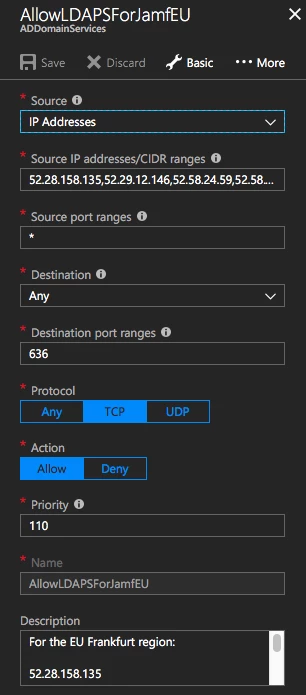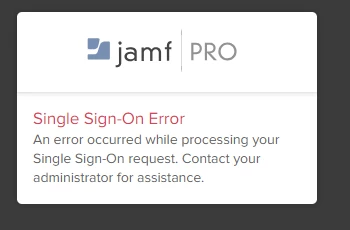Hi,
I see that a growing number of organizations are migrating on-premise AD to Azure AD. Therefore, I decided to share our experiences using Azure AD as a authorization provider for Jamf Pro.
First, LDAP is necessary in order to get user and group lookups to work. This means, you have to set up the service Azure Active Directory Domain Services with external LDAPS support. At this time, this service is available for all Azure subscriptions except CSP subscriptions. It is easy to set up, but requires a DNS entry (a name that points to the public IP address of the new LDAP server) and an SSL certificate that works with the given DNS entry.
So, with this working, you need to know that LDAP login with Azure ADDS is possible, but the users' passwords must be reset before it works. Also, the new passwords operate on another time schedule than Azure AD's password policy, so they may stop working. Bottom line: Don't use AD LDAP as login mechanism in Jamf unless you really have to. But use it for smart groups, user lookups and so on. The LDAP setup is really simple, but there are some distinct differences to other LDAP setups.
Setup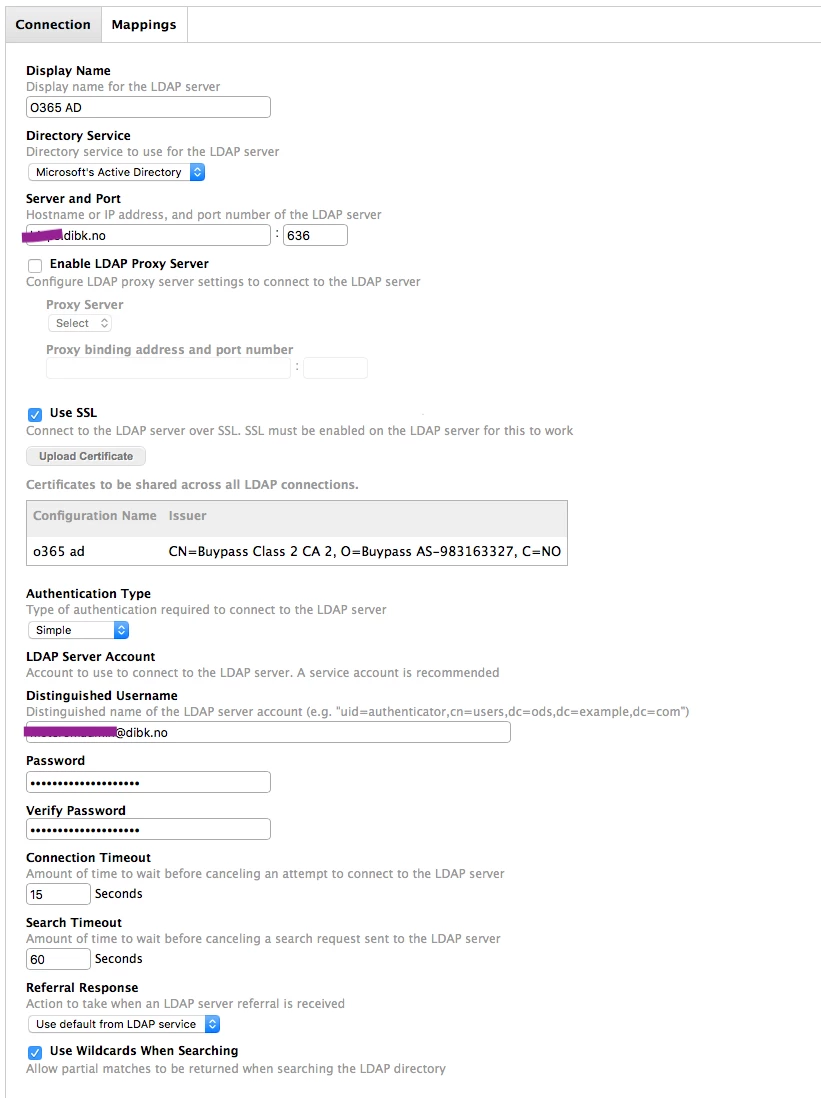
In our example, we are using the AD domain "dibk.no", so we have defined an LDAP server in the AADDS setup. The port will always be 636, and you need to upload the SSL certificate, both to Azure and to the Jamf server, like we have done here.
Use the simple authentication type, and make a service account in Azure AD to authenticate with. Beware that this account must have its password set AFTER you set up Domain Services in order to work. The account must be specified as 'user@domain', not the DN type suggested.
Mapping
The mappings were a bit time consuming to figure out.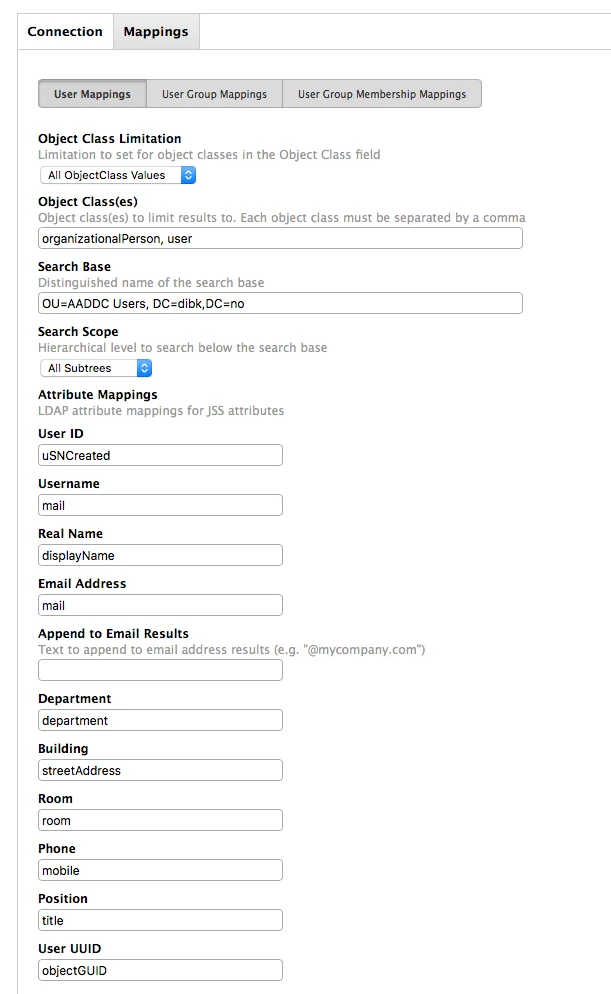
The User Mapping is mostly standard, but beware to use the Search Base "OU=AADDC Users, dc=yourADdomain, dc=com". Also, use mail as Username.
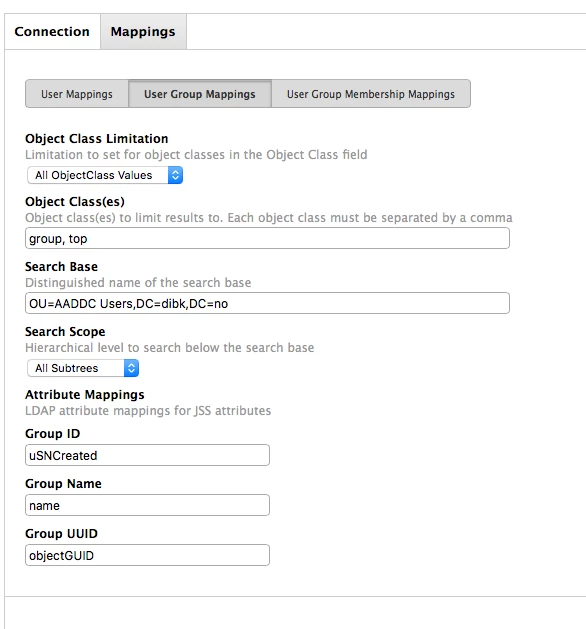
Same thing for User Group Mappings.
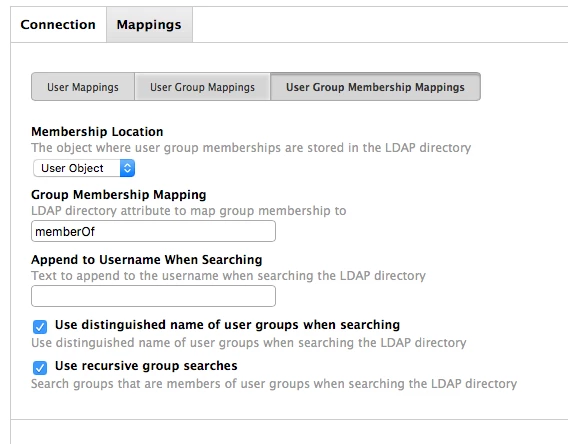
User Group Memberships uses the User object to store its memberships, in the attribute MemberOf.
And that is that for setting up LDAP with Azure AD. With this setup, it should be possible to login to Jamf Pro with a O365 account, provided that the password is reset after adding Domain Services to Azure AD.
Single Sign-On
For Azure AD SSO, most of the work is done setting up a custom enterprise application in Azure AD. And to be able to add a custom enterprise application, you need to have at least a trial license of Active Directory Premium.
So, provided you can create a Non-Gallery Application in your Azure AD (under Enterprise Applications > All Enterprise applications), do so. Make a name, like Jamf Pro SSO, and continue.
You will be asked for the homepage of the application, and it should be like "https://your-jss-server.company.com/". User assignment required should be 'No'.
Under Single Sign-On, choose "SAML-based Sign-On". Specify the following:
Identifier: https://your-jss-server.company.com/saml/metadata
Reply-URL: https://your-jss-server.company.com/saml/SSO
User Identifier: User.mailGenerate a new signing certificate, and make sure to download the resulting Metadata XML for later. Or, you may do it later, but it is needed for setting up the JSS.
Now, go back to Azure Active Directory in the Azure Portal, and choose your new application from the list in App Registrants. Under Properties/Settings, make sure that:
Home Page URL: https://your-jss-server.company.com/
Logout URL: https://your-jss-server.company.com/logout.htmlAlso, under Reply URLs, there should be an entry of https://your-jss-server.company.com/saml/SSO
Back to the main page of the App Registrant for your Jamf SSO, you should be able to click to edit the Manifest. Do so, and make sure that the following line:
"groupMembershipClaims": null,instead reads:
"groupMembershipClaims": "All",Remember to click Save.
Back in Jamf Pro Single Sign-On Settings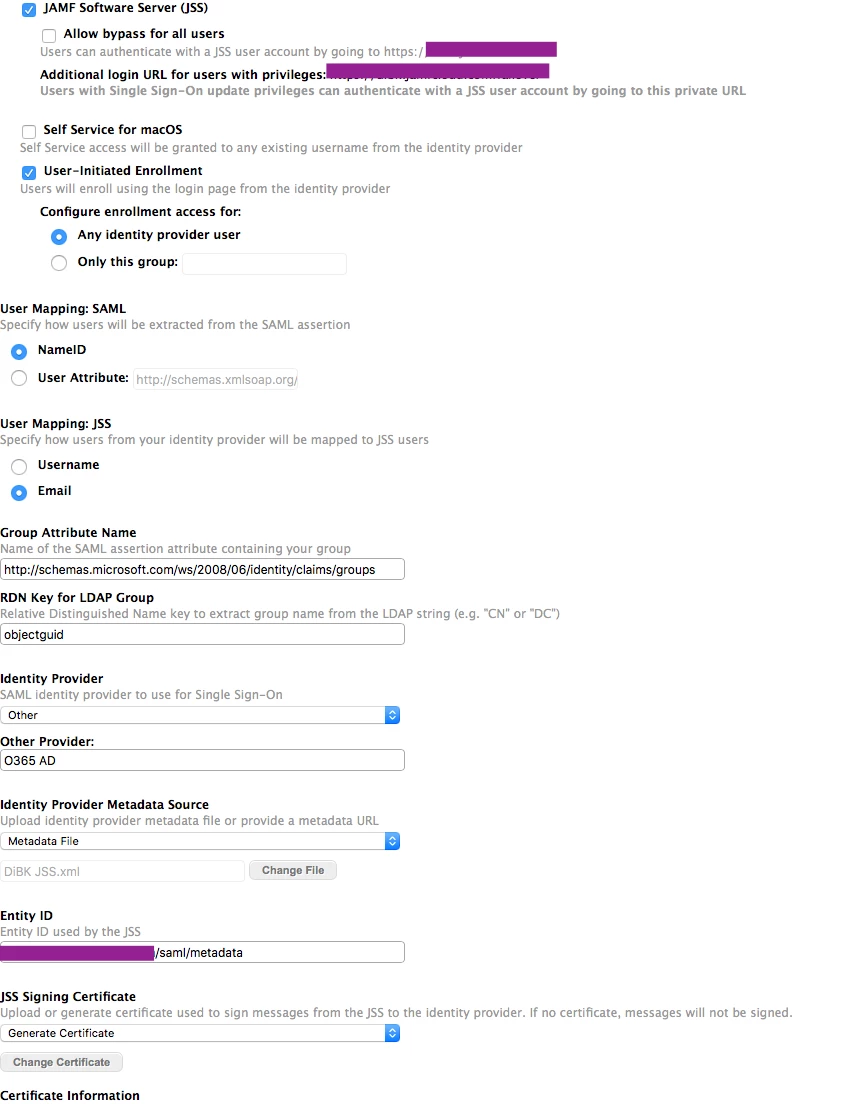
Not much setup necessary. Set Identity Provider to "other", give it a name and upload the metadata XML from Azure AD under Identity Provider Metadata Source, make JSS generate a signing certificate, and specify the same Entity ID as in Azure ID (eg. "https://your-jss-server.company.com/saml/metadata").
Also, you need to specify the User Mapping in SAML and JSS as, respectively, NameID and Email. The Group Attribute Name (which doesn't work, BTW) should be "http://schemas.microsoft.com/ws/2008/06/identity/claims/groups". The RDN Key for LDAP Group should normally be "CN", but for Azure AD it should actually be objectGUID instead. Either way, it does not work at this time.
That should be it. You should now be sent to Microsoft to log in, and if successful, Jamf Pro will let you in afterwards.
In our example, we have avoided using SSO for Self Service, but use it for JSS and Enrollment. If SSO fails (because you didn't do it all correctly) you can always login as an admin using the 'secret' URL stated at the top of the page in SSO setup (usually, just add "?failover" to the server URL). Pro tip: keep a local (non-LDAP) admin account handy for such scenarios...
Good luck!





